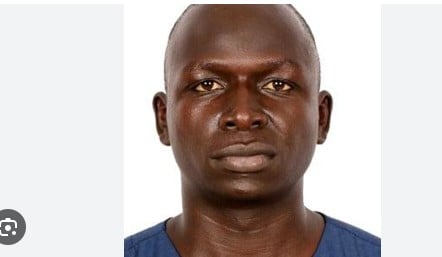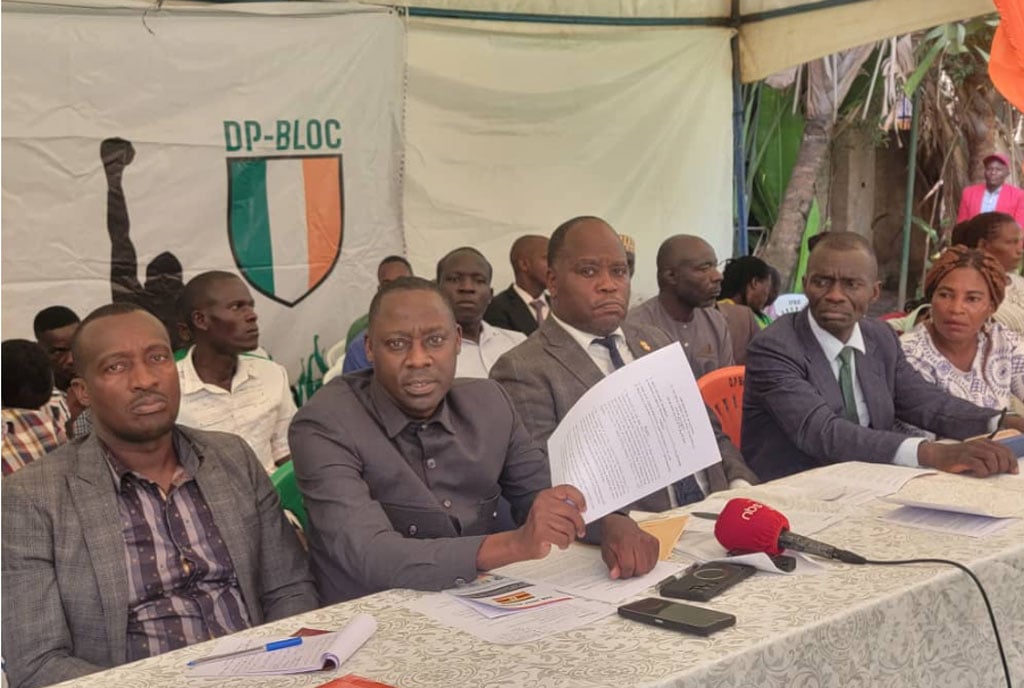Prime
Access to buildings: How People With Disabilities struggle

What you need to know:
In Part II of the series, we look at the struggles People With Disabilities face when trying to get into different buildings both public and private, in parts of the city
Among the most distressing moments in life is to be physically present in a community, but actually not be part of it. World Health Organisation estimates that one in every six people, mainly in developing countries, live lives of isolation and despair because they are living with disabilities and the environment around them is not accessible. Uganda is not any different from these.
The country has seen tremendous growth in the building sector. Tall buildings that house hospitals, worship centres, hotels, schools, entertainment venues and banks dot parts of the capital city. Unfortunately, their designs either intentionally or unintentionally deny people living with disabilities, access.
Disability, according to an online dictionary, is any damage to muscles, nerves, skin, or bones resulting into difficulties in moving about, or performing activities such as dressing, eating, or cleaning.
One can therefore get a disability either by an attack of a disease or accident. Thereafter, he or she will need access to buildings but most buildings in the country are not friendly and when the person is denied access, the resulting effect is unbearable.
Access denial means poverty
The executive director of Uganda National Union of Disabled Persons of Uganda (NUDIPU), Mr Edison Ngirabakunzi, says denying one access means forced poverty, unnecessary sympathy and discrimination in the community.
“The fact that these private and public buildings which are not accessible house offices, health centres, schools and act as employment centres, means total exclusion and poverty. This is the biggest challenge now,” he says.
If a male PWD like Ngirabakunzi who limps and uses one support walking stick, will indeed have a hard time entering Mulago hospital to seek treatment, imagine a woman with a disability, in labour, trying to get to the maternity ward!
Betty Cheptoek Khali faced the same dilemma three years ago when she sought antenatal services. As she prepares for this interview, she puts her artificial legs which are metallic together, makes them straight and stretches her hands to get hold of the crutches without which she will have to crawl.
Crippled at infancy as result of polio, Cheptoek recalls when she was three months pregnant and developed minor complications. She decided to go to Naguru Teenage Centre a few metres away from their home in Bugolobi, only to be turned away.
“Why would you conceive in that condition? What we can do for you is to write a referral to Mulago hospital so you can prepare because we cannot handle your case,” Cheptoek recalls a nurse telling her. The nurse’s reasoning was that the facility did not have low beds that could be used to help Cheptoek deliver when her time came and that largely, the area was inaccessible for her as it has stairs all over the place.
This statement, Cheptoek says, angered her and she remembers thinking to herself: “I’m a female PWD who has feelings and an obligation to give birth. Does having a disability mean not having desire for sex?”
Having failed to get treatment at Naguru Teenage Centre, Cheptoek felt Mulago was not the best referral having nursed relatives there. Accessibility was and is a problem. While the Information Centre has a ramp, the other areas are not easy to access.
To get to the various hospitals floors, Cheptoek says one has to use a lift which sometimes does not work. And even after one has finally accessed the upper floors, the toilets are high, dirty and congested.
Because of this, Cheptoek says her husband contacted a doctor in Nsambya hospital who would treat her. The hospital was accessible and care was given.
“In Nsambya the doctors cared for me and the toilets were accessible. The care they gave me was because of the money that we [the couple] had. I am sure if we were poor they would have turned me away,” she says.
Cheptoek is a programme officer for youth at NUDIPU, and a graduate from Kyambogo University with a degree in Child Development. She had been admitted to Makerere University, but her admission was later transferred to Kyambogo because Makerere University lacks accessible classrooms compared to Kyambogo.
While at Kyambogo University, she represented PWDs in the Guild Council and lobbied for motorcycles for PWDs (locally called tukutuku) which the then Vice Chancellor, Prof Omollo Ndiege, granted. To her surprise however, people without disabilities use the motorcycles to go to Banda and the rest of the university, at the disadvantage of the intended beneficiaries.
The mother of one says being a PWD in a poor country is like living in a prison. On the flip side, she says these conditions, especially difficulties in accessing buildings, has made her “resilient and have self-determination” to prove that disability is not inability. She has also been motivated to fight for a meaningful community inclusion.
Moses Tumukurate, another PWD whose hands and legs are crippled, says despite attaining an O–Level certificate of education, his disability has reduced him to being a street beggar as he can hardly access any buildings.
“I should be able to access a place, say Mulago hospital, or any other building without assistance,” Tumukurate says. But that has not been possible. Since he completed his O-Level studies at St. Joseph’s Secondary School in Kyenjojo District in 2008, he has failed to use his basic knowledge attained in school because people despise and don’t want to employ him, largely on the account of his disabilities.
“I am educated. But I am on the streets begging because many potential employers don’t think I can work. Life of begging is difficult because I cannot get myself the basics. My situation is so bad that even the wheelchair I am using is meant for my mother,” Tumukurate says.
Tumukurate’s mother is physically challenged too. The two live on the veranda of Barclays Bank branck at Wandegeya which they call home.
PWDs are largely the less educated community in the country and very poor. A combination of poverty and illiteracy means vulnerability, discrimination and being a burden to their relatives as they have to feed and provide healthcare for them.
Mr Fred Sokuton, the district education officer for Bukwo, says that for every 10 PWDs who enrol in Primary One, one or none complete primary due to schools being in distant places, poverty and discrimination in the community.
Worse still, the female PWDs especially, are sexually vulnerable, which exposes them to diseases like HIV/Aids. Uganda through its laws streamlined PWDs concerns in the Constitution and ratified other international conventions. The Persons with Disability Act (2006) says the government should make public facilities such as schools and hospitals accessible to the PWDs on top of availing 10 per cent of education budget to this group.
The Act directs building owners to provide safe and accessible urinals and bathrooms to PWDs especially the wheelchair users.
It also says buildings should have safe and well-dimensioned staircases, ramps, adequate rails, and well-dimensioned elevators, which serve all floors normally reached by the public, among others. Accordingly, bathrooms should be wide enough with non-slippery floor tiles.
It all just shows that the country is not short of good laws. Why then are PWDs crying for help?
“These owners of buildings are not complying with our demand to make buildings accessible although we have made a lot of noise,” Safia Nalule, the PWDs representative in Parliament says.
A consistent message from PWDs representatives, organisations and themselves is one: A friendly environment will make them contribute and compete with “normal” persons to fulfil and enjoy productive life. Sadly, the group is frustrated at the slow pace of implementing the legislations and policies that will ensure universal building design with provisions of access to both new and old ones in prime places.
Institutions and some buildings with disability concerns
Established in 2003 after a merger of Uganda National Institute of Special Education (UNISE) and the Uganda Polytechnic, Kyambogo (UPK) and Institute of Teacher Education, Kyambogo University has become one of the leading institutions in the country to champion disability movement.
The institution has a fully-fledged special needs faculty, teaching sign language and adult education to people with disabilities, among others.
Even the buildings at the institution, are disability friendly with ramps and the university has put in place tukutuku (motorcycle-like) that transport PWDs students going to class or those going to Banda for shopping.
Parliament of Uganda, Hotel Africana and Centenary Bank are other accessible places in the country that have ramps, parking spaces for PWDs and toilets.
What all buildings should have

A man with a disability makes his way up a building. The ramp enables him to make his way up. Unfortunately, most of the buildings in the country do not have ramps even when the law says they should. PHOTO BY Stephen Otage
Some people are able to get assistive devices to enable them perform daily tasks. Wheelchairs, walking frames, crutches, communication devices such as message boards and specialised computers are some of these devices. But for some of these – like wheelchairs, walking frames and crutches – to be effective, a gentle surface and enough floor space should be availed. And although a few buildings are accessible by PWDs, majority lack PWDs friendly toilets and seats.
Julius Wamubirigwe, an engineer with Interplan Construction Services Limited, says a desirable internal free floor for PWDs’ toilets should be at least 2200mm x 1500mm to allow the wheelchair user to manoeuvre and turn within the cubicle (the normal toilet size, he says measures 1.5m x 1.8m). Also, the toilets should be 480mm above floor level.
He adds that the toilets’ doorways should not be too narrow or only open inwards as this makes opening and closing difficult.
The ideal, he says, should be urinals and toilets with grab bars, enough space and very low on the ground that can support persons with disabilities. The toilets should be stall-type, smooth and have a firm path while a guide rope along the walls for the blind should also be in place.
Wamubirigwe acknowledges that many designers do not adequately advise building owners that it is now a law to have all buildings with either lifts or ramps to accelerate movement of everyone regardless of their physical abilities. A ramp is an inclined surface that connects two different levels while a lift is simply an elevator. Both of these aim at easing accessibility of buildings.
Wamubirigwe says when constructing a ramp, details of gentleness of the slope to create a safe path, its length and width, the location and handrails must be prioritised.
He says a ramp and PWDs parking should be built near the entrance of every building such that PWDs, can easily park and enter the building. The engineer however says there are a few buildings that have parking for PWDs although now building owners have started appreciating the need for them because sensitisation campaigns are carried out.




